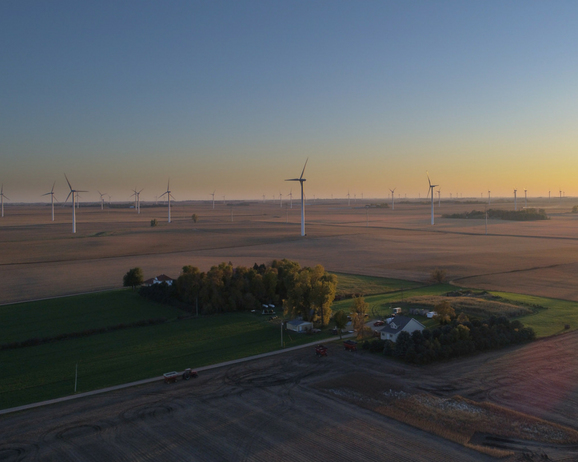Dexter
Farmers Harvest Energy
"You Want to Keep as Many Dollars Coming Into the Farm As You Can..."
Farmers depend on energy. Animal housing operations, irrigation systems and tillage systems – just to name a few – require cost-effective, reliable energy.
With energy costs on the rise, more Minnesota farmers are using wind and solar energy. Some are installing solar to power their own farming operations, while others are leasing their land for solar and wind.
1/4
Reduced Energy Bill
Installing solar reduced Ed Eichten's monthly farm electric bill by a quarter.
$12.7 Million
Wind Energy Production Taxes
In 2018, MN counties will receive $12.7 million in wind energy production taxes.
94
Solar Gardens
At the end of 2017, Minnesota had 94 solar gardens powering 285,000 homes.
"I Know This 22 Acres is Going to Make Me a Profit."
Using energy from the sun is nothing new to farmers, but solar energy presents a new opportunity.
Ed Eichten, owner of Eichten Hidden Acres in Center City, Minnesota, installed a solar system on his land in 2012. It reduced his monthly electric bill by more than a quarter.
In 2016, Eichten leased land to IPS Solar to develop a community solar garden that has become a major source of power in Chisago County. “This solar garden is approximately 22 acres and it produces enough power to power about 1,000 homes,” Eichten noted. “It makes a lot sense for me that I know this 22 acres is going to make me a profit and it’s also producing a lot of electricity and helping out the community.”
“This solar garden is approximately 22 acres and it produces enough power to power about 1,000 homes. It makes a lot sense for me that I know this 22 acres is going to make me a profit and it’s also producing a lot of electricity and helping out the community.”
- Ed Eichten, owner of Eichten Hidden Acres.


Solar projects across Minnesota are increasing. According to the Minnesota Commerce Department there were 94 solar gardens up and running at the end of 2017. They produced 286 megawatts of electricity, or enough to power approximately 285,000 homes. That’s almost enough energy to power every home in Minneapolis and St. Paul.
Like large solar installations, wind farms support local economies and provide income for landowners who lease their land. “The wind turbines have been our saving grace,” says Andrew Hamilton, a farmer in Mower County. “There are upticks and downturns in business and with new challenges everyday you have to adapt and have to correct with the market and be flexible. Wind turbines are a great example of that to try and keep as many dollars coming into the farm as you can.”
The Minnesota Department of Revenue reported that Minnesota counties will receive about $12.7 million in wind energy production taxes in 2018, and that’s in addition to lease payments to land owners. In 2017 the state Commerce Department stated that Minnesota ranked seventh in the nation for wind as a share of total in-state electricity generation.
